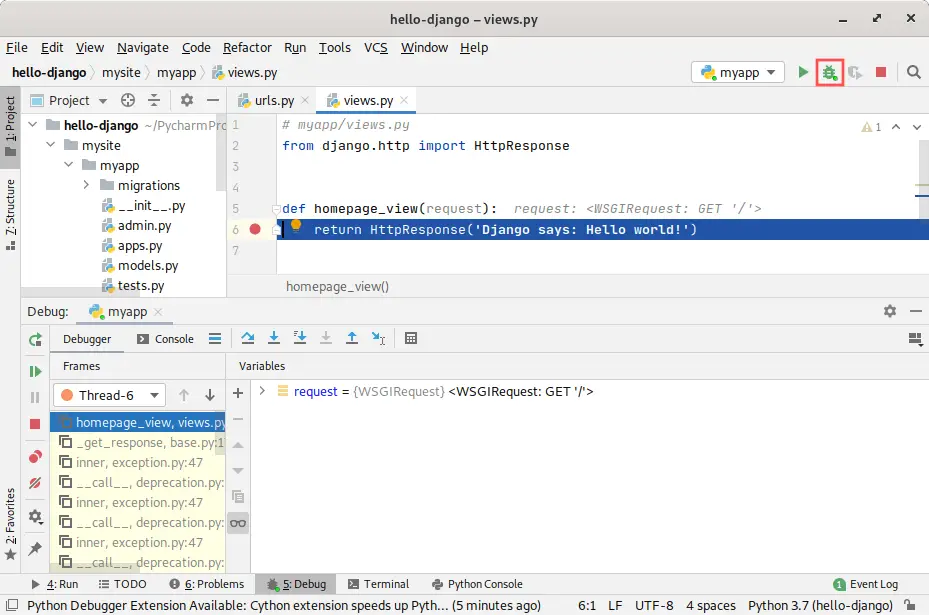

There are two ways to install the packages we need. Have a look around and if you want peek at the docs to see what got created. If you don't have a preference go with the default.
Set up pycharm for django development windows#
windows - Are you developing on Windows (and it should be for this post)? Then this is a Yes as well.

use_pycharm - For this post, this needs to be a Yes.I'm saying no, I'll add it in later if I decide to use it. use_sentry_for_error_reporting - Up to you.You probably want to say Yes to this one. use_whitenoise - Whitenoise is a project that helps you serve static files (images, css, js, etc) from your app.This you want to keep one word, all letters, and all lowercase. project_slug - This gets used for folder names, the app name, database name, etc.It is used in some default text that gets displayed and in a few places. Most of them are self-explanatory, but I'll describe a few here: It uses the information you enter to decide what files to create and what values it should fill in. Cookiecutter will start asking you questions about your project. There are shortcuts (like gh for github), but I find copying and pasting the URL easier and less error prone than remembering the shortcuts. Once you are there run cookiecutter passing the location of the template you want to use as the first argument. The template will create a new directory to hold all the project files. To get our Django project started open up your command prompt and move to the directory where you'd like the project installed. If you've read the book (and you should) you'll notice that the layout is similar, but not identical to what they describe there. Both the Cookiecutter-Django and the Cookiecutter projects are from the team behind the Two Scoops of Django books. Cookiecutter-Django is a Cookiecutter, well, cookiecutter (template) for a well-configured Django installation.


 0 kommentar(er)
0 kommentar(er)
